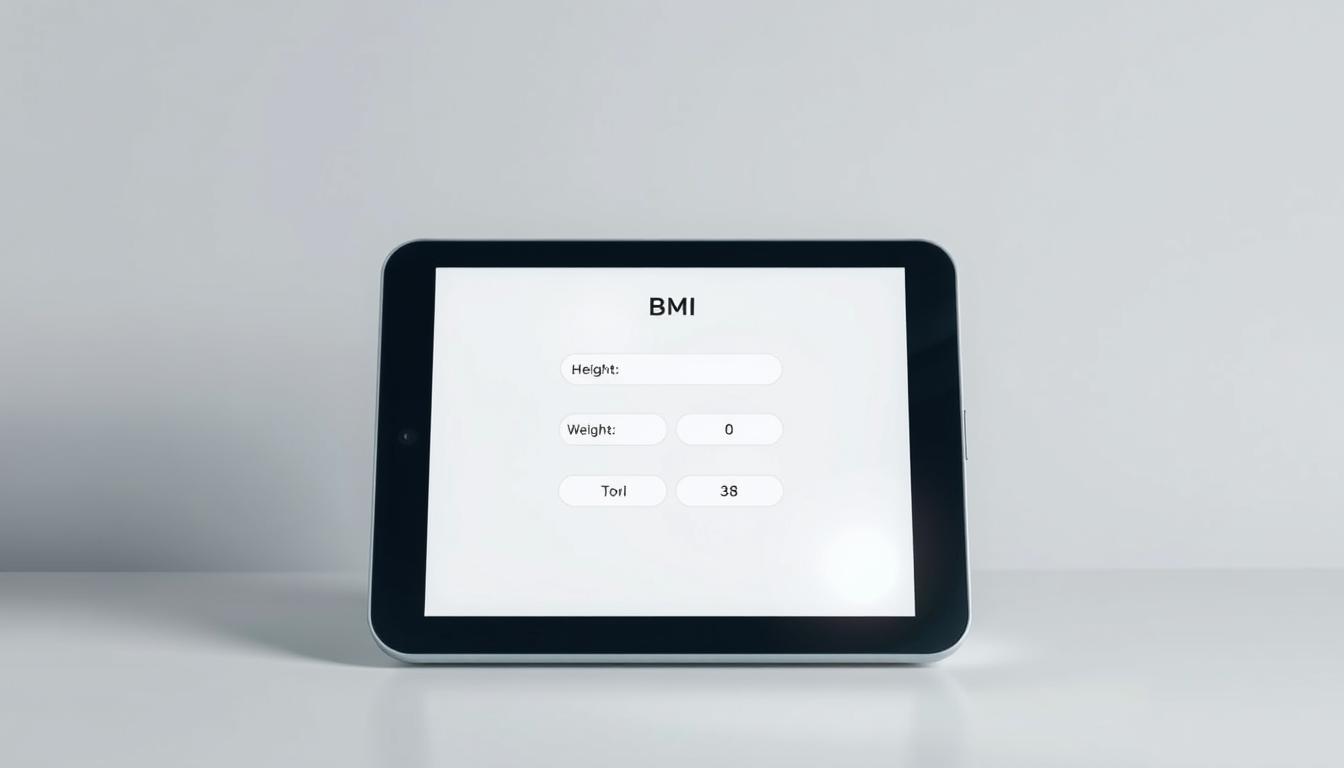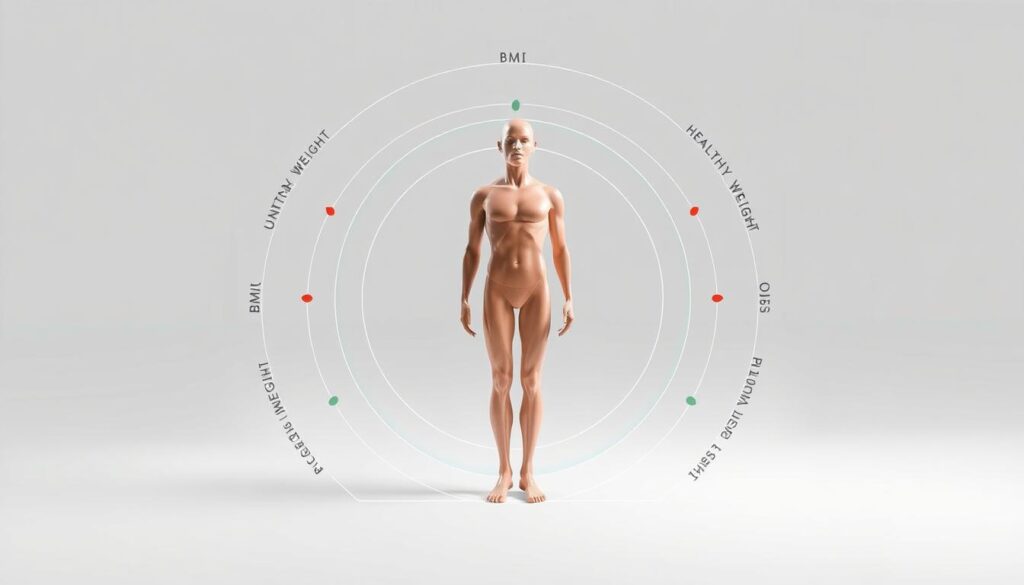Many people assume being thin automatically means being healthy. But what if your body needs more attention than the scale suggests? Understanding your unique health needs starts with accurate tools designed for specific goals.
We created a specialized tool to help adults identify if they fall below the healthy weight range. This resource focuses on individuals aged 20+, using formulas endorsed by major health organizations. It evaluates weight relative to height, providing insights into potential health risks linked to being underweight.
While this measurement offers a helpful snapshot, it’s just one piece of the puzzle. Factors like muscle mass and overall lifestyle also matter. For those aiming to improve their wellness, combining this data with effective weight management strategies creates a balanced approach.
Key Takeaways
- Our tool is tailored for adults concerned about being below a healthy weight range.
- Calculations align with guidelines for individuals aged 20 and older.
- Body mass index compares height and weight to assess potential health risks.
- Results should be discussed with a medical professional for personalized advice.
- Regular monitoring helps track progress toward wellness goals.
Understanding BMI and Its Importance
Health assessments often rely on measurable data to paint a complete picture. One widely recognized screening tool compares a person’s proportions to identify potential concerns before they escalate.
What This Measurement Tells Us
The body mass index formula divides an individual’s weight in kilograms by their height in meters squared. This calculation creates a numerical value that places people into standardized categories. While it doesn’t measure body fat directly, it serves as an accessible starting point for evaluating physical well-being.
Interpreting Range Classifications
Four primary classifications help identify where someone falls on the spectrum:
- Below 18.5: Indicates potential nutritional deficiencies
- 18.5–24.9: Associated with lower disease probabilities
- 25–29.9: Suggests increased cardiovascular strain
- 30+: Correlates with metabolic complications
These thresholds help medical professionals spot patterns linked to conditions like osteoporosis or diabetes. However, dense muscle tissue can skew results for athletes, demonstrating why context matters.
Maintaining proportions within the ideal bracket reduces multiple health risks, but achieving balance requires considering age, activity levels, and genetic predispositions. Regular check-ins with healthcare providers ensure personalized strategies for sustained wellness.
How to Use Our BMI calculator for underweight adults
Accurate health evaluation begins with precise measurement techniques. Our tool simplifies this process through straightforward inputs and validated formulas. Let’s walk through how to get reliable insights about your physical proportions.
Step-by-Step Measurement Process
Start by entering your height and weight using either metric or US units. For manual calculations:
- Metric method: Divide weight (kg) by height squared (m²)
- US method: Multiply weight (lbs) by 703, then divide by height squared (inches²)
Our automated version handles these standard formulas endorsed by health authorities, eliminating math errors.
Understanding Your Results
Scores below 18.5 suggest you might benefit from nutritional support. However:
- Athletes with high muscle mass may receive misleading numbers
- Postmenopausal individuals often need different benchmarks
“This tool provides initial guidance, not medical diagnoses,” notes Dr. Ellen Torres, a public health nutritionist.
Important Usage Notes
Our system works exclusively for those aged 20+. Children and teens require pediatric-specific evaluations due to growth patterns. Remember:
- Doesn’t differentiate fat from lean tissue
- Doesn’t account for bone density variations
Combine these insights with bloodwork and professional consultations for complete health planning.
Tips for Achieving a Healthy Weight
Building sustainable habits forms the foundation of lasting wellness. Small, consistent changes often yield better results than drastic overhauls. Focus on nutrient-rich foods and enjoyable movement patterns that align with your daily rhythm.
Fueling Your Body Strategically
Start with balanced meals containing lean proteins, whole grains, and colorful vegetables. Try these adjustments:
- Swap sugary drinks for infused water or herbal teas
- Add nuts or avocado slices to boost calorie quality
- Eat smaller portions more frequently throughout the day
Regular physical activity strengthens muscles and improves metabolic function. Aim for 150 minutes weekly of moderate exercise like brisk walking or cycling. Pair this with resistance training twice weekly to support bone density.
Reducing Health Risks Through Awareness
Maintaining a healthy weight lowers chances of developing heart disease and type 2 diabetes. Track progress through:
- Weekly check-ins with a bathroom scale
- Energy level assessments
- Clothing fit evaluations
“Nutrition and movement work best when personalized – what energizes one person might overwhelm another.”
Men and women often need different calorie intakes and recovery times. Consult a dietitian to create plans addressing your unique body needs and lifestyle demands.
Conclusion
True health awareness balances reliable tools with personal insight. Our body mass index assessment serves as a starting point for adults exploring weight-related concerns. While it effectively compares height and mass, remember it’s one piece of your wellness puzzle.
Muscle density and fat distribution impact results – athletes or those with lean builds might see misleading numbers. That’s why we emphasize pairing our tool with medical consultations. Professionals analyze bloodwork, lifestyle factors, and family history to create complete health profiles.
Maintaining balanced proportions helps reduce risks like heart issues and diabetes. Small daily changes – nutrient-rich snacks or enjoyable movement – build lasting results. Track progress through energy levels and clothing fit rather than just scale numbers.
We designed this resource to empower informed decisions, not replace expert care. Together, let’s build strategies that honor your unique body and goals.



